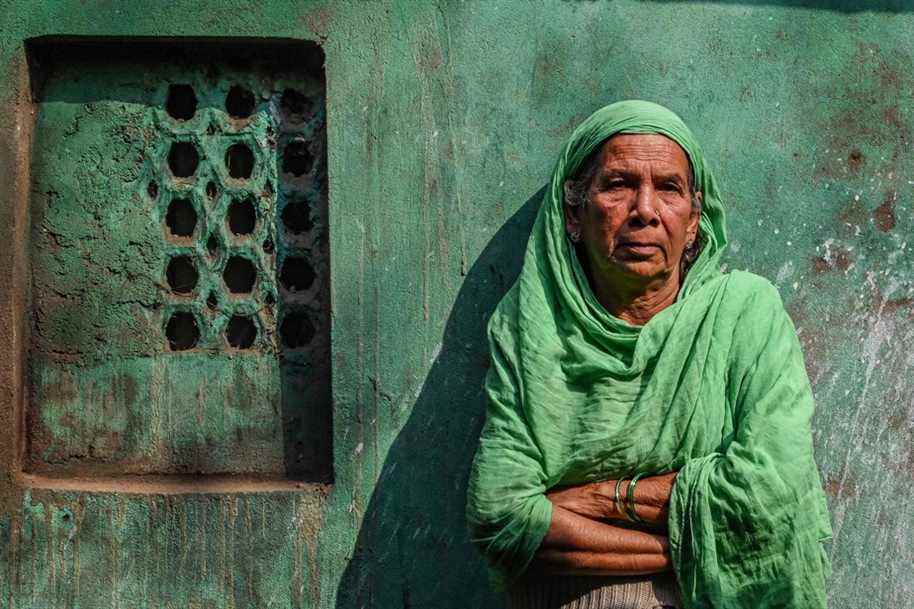(Calcutta) From her tiny apartment in a Calcutta slum, Sultana Begum, 68, fights for ownership of an imperial palace, claiming to be an heir to the dynasty that built the Taj Mahal.
Among his modest possessions, the most precious is undoubtedly his marriage certificate with Mirza Mohammad Bedar Bakht who claimed to be the great-grandson of the last ruler of the Mughal Muslim empire.
“Can you imagine that the descendants of the Emperors who built the Taj Mahal today live in immense poverty? », Points out this sexagenarian who, since the death of her husband in 1980, lives in the greatest deprivation.
But for a decade, a single objective has animated it: to have its imperial status recognized and to obtain financial compensation as a result.
Tenacious, Mme Begum has taken legal action to establish that she is the rightful owner of the Red Fort in New Delhi. This huge 17th century fortified palacee century, a UNESCO World Heritage Site, represents the peak of Mughal creativity.
“I hope to get justice […] When something belongs to someone, you have to give it back, ”she says.
Her cause, supported by activists, is based on the premise that her late husband’s lineage dates back to Bahadur Shah Zafar, the last Mughal emperor of India.
When the latter was crowned in 1837, the power of the Mughals was limited to New Delhi and its periphery, after the colonization of India by the British.
Symbol of independence
Twenty years later, when the first war of independence against the British East India Company broke out, the mutineers designated Bahadur Shah Zafar as leader of this insurrection.
The Emperor, who was more inclined to write poems than to wage war, knew this uprising was doomed. Within a month, the British army had surrounded Delhi and crushed the revolt, executing the ten surviving sons of Zafar Bahadur Shah despite his surrender.
The Emperor was then exiled to Burma, where he died five years later in captivity and in great poverty.
Many of the buildings in the Red Fort had been demolished in the years following this uprising and the palace fell into disrepair before the colonial authorities ordered its renovation in the early 20th century.e century.
Since then, it has been the symbol of India’s independence. On August 15, 1947, the country’s independence day, Prime Minister Jawaharlal Nehru hoisted the national flag from the main gate of the fort, a ceremony now annual.
The proceedings initiated by Mme Begum is based on the fact that, according to her, the Indian government is illegally occupying this palace which she should have inherited.
Last week, the Delhi High Court dismissed his claim, calling it “a huge waste of time,” without commenting on the legitimacy of his claim as a descendant of a monarchy.
“Justice will be done”
The court found in particular that his lawyers failed to justify why such a case was not brought to justice by the descendants of Bahadur Shah Zafar during the 150 years that have passed since his exile.
His lawyer, Vivek More, told AFP that he intends “to file a request before a higher court to challenge the order”.
The 60-year-old has never known the golds of a palace, even when she lived with her husband whom she married in 1965 at the age of 14. He was 32 years older than her. A diviner by profession, he has never been able to financially support his family.
“Poverty, fear and lack of resources have pushed him to the edge of the abyss,” told AFP Mme Begum, who lives with one of her grandchildren in a tiny two-room apartment in a slum. She shares a common kitchen and washes herself at a tap on the street.
For years she ran a small tea shop, but it was demolished in order to widen a road. Now she survives on 6000 rupees ($ 102) per month.
But she has not lost the hope of one day being recognized as the legitimate heir to this imperial lineage and the Red Fort.
“I hope that today, tomorrow or in ten years, I will get what I am entitled to,” she says.
“God willing, I’ll get it back… I’m sure justice will be done.”
